The global production of rubies is very rare, and the quality of rubies is even rarer. Therefore, the price of rubies in the jewelry market has been rising and staying high. This is one of the important reasons why people continue to use artificial methods to improve the quality of rubies. Moreover, most of the rubies on the market are more or less artificially optimized by different degrees, and some unscrupulous merchants use some other red gems. The similarity of impersonation, or simply the use of synthetic methods, these ways, buy ruby ​​to guard against the optimization of diamonds.
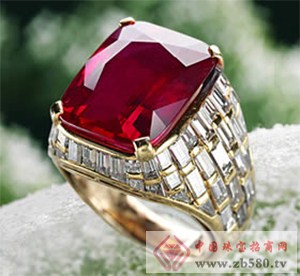
GraffRuby, 8.62 carats Pigeon's Blood, 2006 Christie's 3,637,480 US auction
Manual optimization
Heat treatment method:
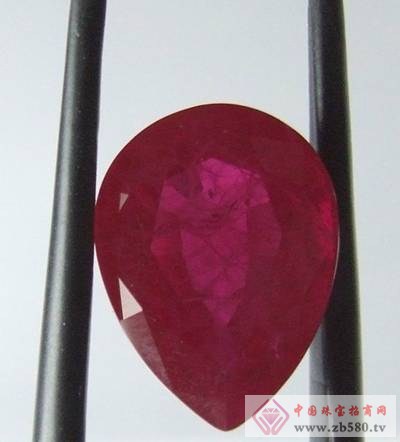
Heat treated ruby
The most common artificially optimized treatment method for rubies in the jewelry market is simple and convenient to be used by most people. Simply heating the ruby ​​to a specific temperature will improve the color of the ruby, improve the transparency of the gemstone, eliminate some inclusions and ribbons inside the ruby, and compensate for the small cracks on the surface of the gemstone, which will not be of high quality. Ruby, artificially optimized for high quality purposes. This kind of physical optimization does not destroy the gem structure, and does not add some other substances. It is considered to be the best way to make up for the lack of nature, and has been accepted, approved and allowed. The heat-treated ruby ​​is It is considered equivalent to natural ruby, and no special statement is required. Of course, it is not deceiving.
Dyeing treatment method:
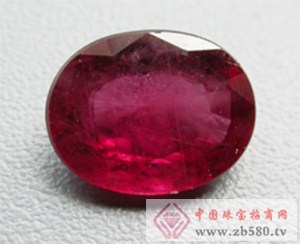
By chemical method, artificially adding chromium oxide, that is, diffusion treatment technology, the chromium oxide in the chemical reagent is chemically incorporated into the gem lattice to achieve the purpose of dyeing.
The dyeing treatment method can manually process the colorless corundum into a ruby ​​with red color. Although this method is consistent with the principle of red color of natural ruby ​​and does not fade, people still define this method as post-processing. Cannot be sold at the level of natural rubies.
Synthetic method
Wayne synthesis method (melting method):

Flame melting method for synthesizing ruby ​​crystal
Invented by the French chemist Wei Nuoyi, the Weixinyi furnace made by the company made the alumina powder into a red artificial gems similar to rubies. This is also the earliest synthetic ruby.
There are many artificial rubies on the market today, most of which are used to make some cheap decorative jewellery, but others use it as a natural ruby.
Cosolvent synthesis method:
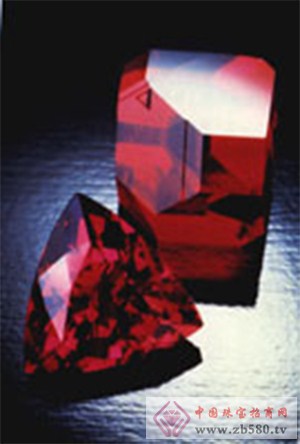
Cosolvent synthesis of crystal appearance of ruby
Developed in 1963 by Chatham, USA, a new artificial ruby ​​was synthesized using a co-solvent and named Chatham Ruby.
This brand new ruby ​​is similar in appearance to the natural ruby ​​in appearance. It is highly deceptive and difficult to judge with the naked eye. It is more difficult for ordinary people to buy or collect. It is best to ask for professionalism. The appraisal agency conducts detailed appraisal.
Hydrothermal:
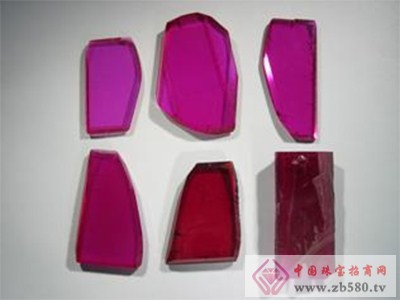
Hydrothermally grown red series of corundum gemstone crystals
The hydrothermal method can be simply described as the use of high-temperature, high-pressure aqueous solutions to dissolve and recrystallize materials that are generally poorly soluble or insoluble. The ruby ​​synthesized by this method is closer to natural rubies than the cosolvent method, and is more difficult to recognize and distinguish. The remarkable feature of hydrothermally synthesized rubies is the presence of seed inclusions; sometimes some "breadcrumb"-like inclusions, or some tiny corrugated textures, can be seen. Sophisticated large instruments.
In general, these synthetic rubies are far more headaches on the market than artificially optimized rubies.
Natural substitute
Broadly speaking, as long as the red gems can be used as a substitute for rubies, the gems similar in appearance to rubies are mainly red spinel, red garnet, red tourmaline, red beryl, red zircon, red topa Stone and red glass.
Among them, red spinel is often mistaken for ruby. The “Souling Ruby†and “Hailian Ruby†in the East China Sea are garnet, and the garnet is also known as “Arizona Ruby†and “Waveâ€. Simia Ruby". "Brazilian ruby" is called red topaz, "Siberian ruby" is red tourmaline and so on.
The rectangle jewelry box is the most common jewelry box, but also the most practical jewelry box. And the surface of the rectangle jewelry box can divided into plane and cambered. The rectangle jewelry box is simple but elegant, you can used it to contain your jewelry or send to your friends, I believe you will like it very much.
Brand Name: Jinao
Place of Origin: Guangdong, China(mainland)
Surface Material: Customized
Inner Material: Velvet / foamed plastic
Color: Customized
Size: Multi-size + Customized
Feature: Classic / Elegant
Logo Printing: Customized
Usage: Jewelry Box / Gift Box
Rectangle Jewelry Box,Classic Rectangle Jewelry Box,Jewelry Gift Box,Handmade Jewelry Box
DongGuan Jinao Packaging Products Co., Ltd , https://www.jinaojewelrybox.com